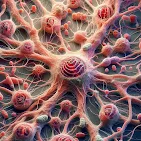Colace and colleagues (2014), conducted a study that delves into the connection between drug dreams and the activity of the limbic system in heroin addicts:
- The Limbic System Checklist-33 (LSCL) was employed to assess limbic system function.
The Limbic Checklist-33 (LSCL) is a questionnaire designed to assess symptoms related to the limbic system, a part of the brain involved in emotions, memory, and motivation.
The LSCL asks a series of questions about physical, sensory, behavioral, and memory symptoms.
These symptoms can be indicative of issues with the limbic system, such as those experienced in conditions like temporal lobe epilepsy.
Why is it used?
The LSCL is used as a tool to help identify potential problems with the limbic system. It can be helpful in diagnosing conditions or understanding the underlying causes of certain symptoms. Important note: While the LSCL is a useful tool, it's important to remember that it's just one part of a comprehensive evaluation. A healthcare professional will need to consider other factors and tests to make a diagnosis.
Fifty-three heroin addicts participated in the study. Participants were interviewed about their drug dreams using the Drug Dreams Questionnaire.
Here were their results (Colace et al, 2014):
- The findings revealed elevated LSCL scores in heroin addicts, suggesting limbic system irritability.
- Notably, individuals who experienced drug dreams exhibited significantly higher LSCL scores compared to those without such dreams.
- These results align with previous research on the characteristics and clinical relevance of drug dreams.
Discussion and Conclusion
People who had drug dreams also showed signs of increased limbic system activity. This suggests that strong cravings for drugs might be linked to higher levels of dopamine in the brain's reward system. These findings support the idea that this brain area is important for dreaming.
This study shows that drug dreams are linked to strong cravings for heroin and increased activity in the brain's emotional center. This helps us better understand how the brain contributes to addiction and could lead to new ways to treat it.
References
Colace, Claudio & Belsanti, Sergio & Antermite, Antonia. (2014). Limbic system irritability and drug dreams in heroin-addicted patients. Heroin Addiction and Related Clinical Problems. 16.























